Paleo Diet Vs. Keto: Differences & Which One Is Healthier?
Learn whether eating like our forefathers or cutting carbs from your diet works best for you.
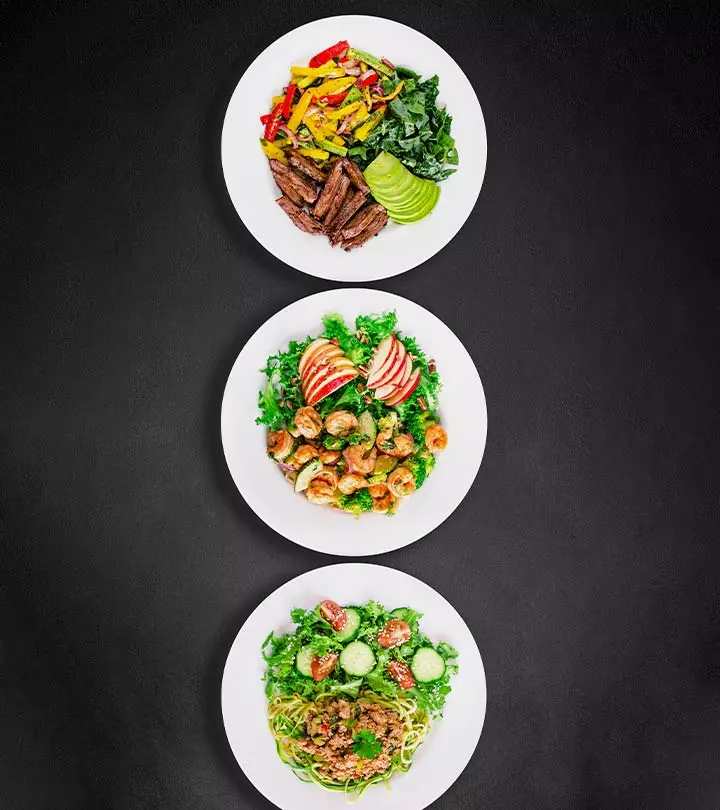
Image: Shutterstock
Keto and paleo are low-carb diets popularly used for weight loss (1). But taking a closer look at the paleo diet vs. keto, it is clear there are a few key differences between them – from their macronutrient division (protein, fat, and carbs percentage) and benefits to their implementation and practice. However, they both have the same ultimate goal and focus on nutrient-rich, clean eating that enables you to follow a healthy lifestyle. In this article, we will break down each diet to help you understand the differences and similarities between the paleo and keto diets. In the end, you will be able to decide on the one that works best for you. Scroll down to know more!
In This Article
What Are Keto And Paleo Diets?
Before starting any diet plan, you must not only be clear of what to eat and what not to but also, why this diet works the certain way it does. In this article, let’s have a look at what the current hype about the Paleo diet vs Keto is all about.
- Keto Diet
The Keto (Ketogenic) diet is based on the principle of reducing and replacing carbohydrates with fats as the major energy source of the body. When the body doesn’t find any carbohydrate/glucose to source its energy from, it breaks down the “fats” in the body and enters a state of metabolism known as “Ketosis”. The fat is essentially broken down to organic byproducts known as “ketones” that are cleared out of the body through urination (2).
This whole process leads to a visible reduction of fat deposits all through the body making you look and feel slimmer. However, if the ketone levels get too high, then this might become dangerous. Hence, you should follow this diet as prescribed without any gaps or experimentation.
A survey conducted on 1200 U.S. adults suggests that 19% of them have tried the keto diet, and 85% felt it was effective for weight loss. Out of these, 49% said that the eating pattern was very effective, while 35% found it to be somewhat effective.
 Trivia
Trivia- Paleo Diet
The Paleo (Paleolithic) diet follows the ideology that you should continue to source and eat food like our ancestors in primitive paleolithic times. During those days, humans were nomadic hunters who sourced food in their most natural form like organic plants, fruits, vegetables, grass-fed poultry, naturally raised meat, wild-caught fish, etc. The Paleo diet focuses more on the quality of food than the type of food. It excludes all “processed and refined” food, along with grains, beans, legumes, and dairy as these came much later in human civilization (3).
As reported by the American Society for Nutrition, Paleolithic diets were not uniform. Their selection of foods depended greatly on the geography and climate of the area (4).
While both these diets are similar in their idea of eating nutritious food to complement a healthy lifestyle, there are a few other similarities that we explore below.
Key Takeaways
- Paleo and keto diets are two of the most popular weight-loss diets.
- While the paleo diet focuses on wholesome organic meals, the keto diet is a more restrictive no-carb diet.
- Both diets encourage avoiding junk food, grains, and legumes.
- While the keto diet can provide faster results with strict portion control and nutritional restrictions, it is less sustainable than the paleo diet.
Similarities Between Keto And Paleo Diets
- Both diets avoid processed or junk food in any form.
- Both diets encourage lower carbohydrate intake than the usual weight loss diet plans as recommended by the dietary guidelines by the USDA (5).
- Both diets avoid grains and legumes for different reasons. While the Paleo diet restricts grains and legumes because these came pretty late in human civilization, the Keto diet avoids these because of their naturally high carbohydrate content.
- Both diet plans include animal protein in the form of meat, poultry, and fish. While the Paleo diet focuses on organically raised, grass-fed meat and wild-caught fish, the Keto diet emphasizes fat-rich cuts of the same.
- Both result in visible weight loss.
 Did you know?
Did you know?While both these diets focus on good quality, nutrient-rich healthy food overall, there are a few differences as well, majorly in their implementation and the inclusion/exclusion of certain foods.
Differences Between Keto And Paleo Diets
- The Paleo diet is more flexible in its approach while the Keto diet requires strict measurements and complete avoidance of carbohydrates.
- While the Keto diet is usually higher in fat, the Paleo diet is higher in carbs.
- Most naturally available fruits and starchy vegetables are allowed in a Paleo diet but are restricted in Keto.
- While the Paleo diet excludes any form of dairy, the Keto diet allows full-fat, sugar-free dairy products.
- The Paleo diet allows sugar in its natural forms like raw honey, maple syrup, coconut sugar, and date sugar. On the other hand, the Keto diet excludes sugar in any form.
- A Keto diet is best done under the supervision of a trusted dietitian as it follows strict portion control of the macronutrients that are allowed. A typical keto diet covers 60-75% of calories from fat, 15-30% from protein, and 5-10% from carbs. The Paleo diet, on the other hand, doesn’t follow any such strict breakdown of calories and nutrients.
To sum it all up and to give you a better understanding of what food is allowed, and which is not in Paleo and keto diets, you can have a look at the below food chart for easy reference.
Food Chart: What’s Allowed, What’s Not
| Food Group | Paleo Diet | Keto Diet |
|---|---|---|
| Fruits | Allowed | Mostly not allowed |
| Vegetables | Allowed | Allowed if low in carbs |
| Nuts and Seeds | Allowed | Allowed |
| Animal Protein | Allowed if organically raised and unprocessed | Allowed with good fat content |
| Dairy | Not Allowed | Allowed if full-fat and sugar-free |
| Grains | Not Allowed | Not Allowed |
| Legumes | Not Allowed | Allowed if low in carbs |
| Healthy Fats | Allowed | Allowed |
| Natural Sweeteners | Allowed | Not Allowed |
| Sugar-Free Sweeteners | Not Allowed | Allowed |
| Processed Food | Not Allowed | Not Allowed |
Now that we know what food is allowed in which diet, let’s also learn which diet is healthier in the long run.
Which One Is Healthier?
A diet plan should be not only inclusive, healthy, and easily doable but also sustainable. Eagerly starting a diet regimen, only to fall off a few days into it would not only mess up your body’s internal balance but could be potentially harmful, especially in restrictive diets like the Keto diet.
While a Keto diet is better in the short term for weight loss, it is the Paleo diet that is more inclusive of most food groups. As it focuses more on the organic nature of the food, it is a simpler and superior diet to follow when it comes to your overall digestive health.
The keto diet is a more rigid diet with strict measurement and portion control. Complete avoidance of carbohydrates brings about a sort of anxiety about food intake. The Paleo diet, on the other hand, is more flexible about including most varieties of wholesome foods.
If you consider the above points and a practical approach towards a diet plan, then the Paleo diet plan would seem the healthier one. Though you may also choose to opt for the Keto diet as it helps with faster weight loss along with being particularly helpful in certain other health conditions. Let’s have some more insight into the same as cited below.
Benefits And Drawbacks
Deciding upon a diet has its pros and cons. Each diet is specially structured keeping certain health conditions in mind. One must be aware of the benefits and side effects of the same before choosing to follow any particular diet plan.
Benefits Of Keto
- The keto diet has been found to support rapid weight loss (6).
- Most food rich in fats that are restricted in traditional weight-loss diet programs is allowed in the Keto diet.
- A Keto diet might potentially reduce seizures, as is reflected in a review done in 2019 (7). According to data from the Johns Hopkins Pediatric Epilepsy Center, this diet helps control seizures in 70-75% of patients and gets rid of seizures in 50% of patients who follow it rigidly (8).
- Keto has been found beneficial in hormonal imbalances including PCOS and type-2 diabetes (9).
Drawbacks Of Keto
- The diet requires strict adherence to macronutrient portions and measurements that might make it hard to sustain after a certain while.
Lisa, a blogger, embarked on a keto diet journey, primarily to detoxify her body from sugars and bad carbs. She attributed some of her weight gain to medication for an underactive thyroid. Despite experiencing an 8 lb weight loss plateau, she sampled various food options, even contemplating a shift away from keto due to her less strict adherence to its guidelines. She reflected, “I honestly believe I have yet to be in ketosis and everything I have lost has probably been water weight (i).”
- Complete avoidance of any form of carbohydrates may trigger an unhealthy obsession with food.
- Food restrictions might result in a deficiency of certain important nutrients.
- Some people might also experience brain fog, fatigue, and constipation, symptoms that together comprise a condition known as “Keto-flu”(10).
- Higher amounts of saturated fat may affect your overall heart health.
- Following the keto diet on a long-term basis does not appear to provide significant benefits.
Now that we have known the pros and cons of the Keto diet, it becomes imperative to understand the positives and negatives of the Paleo diet as well, to help you make an informed decision between the two.
Benefits Of Paleo
- It encourages a healthy lifestyle by allowing only wholesome organic foods.
- Consumption of healthy fats might improve your cardiovascular health and may also lower your risk for type-2 diabetes (11).
- It is easy to follow and hence is more sustainable in the long run.
- It helps you reach and maintain a healthy weight.
Drawbacks Of Paleo
- Sourcing high-quality wholesome organic food might make this diet expensive.
- As per studies, the exclusion of grains, dairy, and legumes might lead to less intake of essential nutrients and increase the risk of certain deficiencies (12).
- Avoiding whole grains might result in less fiber intake, ultimately impacting the overall gut health.
- Excluding dairy products from your diet might result in low calcium levels and affect bone and tooth density (13).
Before you decide to make a lifestyle change or take up any diet, it’s important to be sure of the reason behind it and how the diet works for your body.
Things To Consider Before Deciding On Paleo Vs Keto Diet
- Whether you are doing it for weight loss, to address any particular health issue, or to aid in your overall health and fitness, you should make an informed decision.
- You should be aware of your pre-existing health conditions.
- Your daily activity levels should be in sync with the diet you are about to follow.
- How much time you have on hand to source and plan the diet recipes also play an important role.
- You should have an accountability partner or someone whom you have informed of the changes you are making in your diet. You can also join a keto or paleo group on Facebook or Instagram for more support and inspiration.
- Most importantly, you should take the advice of a certified health practitioner before beginning any diet.
For most people, deciding upon a diet is more about weight loss than anything else. Going further, we have a look at which of the two diets helps you lose weight effectively and how.
Keto Vs Paleo Diet For Weight Loss
If you have been living on a majorly unbalanced diet full of processed foods and sugar, then either of these diets would result in a certain amount of visible weight loss (14). A Keto diet plan helps you lose weight faster given that you measure your macronutrients and calorie intake meticulously. On the other hand, a Paleo diet is easily sustainable and can help you lose weight over a longer period (15). Once you have consulted with your health practitioner, you can go ahead and try the one best suited for your body.
No matter how excited or intimidated you are to embark on your diet journey, you should be armed with a few basic recipes to start with. To make it easier for you, we have shared a few recipes below.
Paleo And Keto Diet Recipe Examples
Paleo Diet Recipes
- Two Ingredients Banana Eggs Pancake
Whip up these pancakes in a jiffy with just two main ingredients!
Ingredients
- 1 banana
- 2 eggs
- ½ teaspoon coconut oil for frying
Instructions
- Mash the bananas in a bowl.
- Whisk the eggs well and add to the banana paste.
- Gently pour a ladle full in a pan and fry on low medium heat with little oil.
There you go! Just add your favorite raw honey, maple syrup, and some wild berries and you are ready to dig in!
2. Lemon & Blueberry Energy Balls
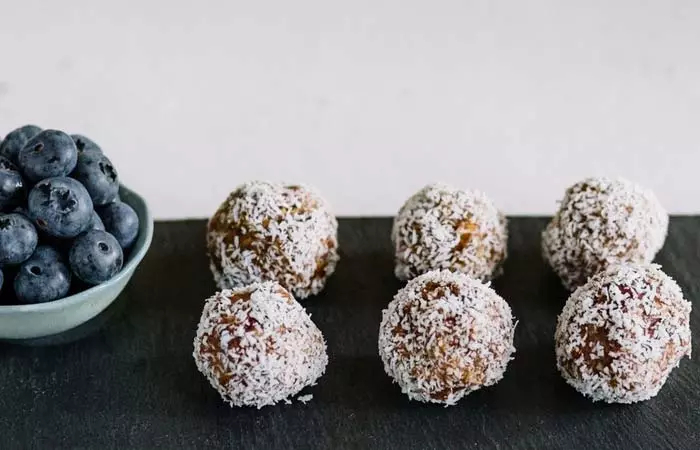
These quick and simple energy balls are all you need for those mid-morning hunger pangs.
Ingredients
- 1 cup of cashews
- ¾ cup of dates
- ½ tbsp of honey or maple syrup
- 1 tablespoon of coconut oil
- 1 ½ tablespoons of lemon zest
- 3 tablespoons of lemon juice
- ½ teaspoon of turmeric
- ½ cup of unsweetened shredded coconut
- ½ cup of dried blueberries
Instructions
- Add the dates and cashews into a food processor and blend until broken into smaller pieces.
- Mix in the rest of the ingredients (except dried blueberries) and pulse until all is well combined.
- Stir the dried blueberries by hand into the mixture.
- Wet your hands slightly and roll the dough into 24-26 balls.
- Place them in an airtight container and store them in the fridge.
That’s it! You can take a healthy bite as and when you feel like it.
Keto Diet Recipes
- Avocado, Chia Seeds, And Cacao Smoothie
This Keto smoothie is a fun and easy way to get you started on your Keto diet. High in proteins and fats, and low in carbs, this smoothie makes for a wholesome breakfast meal in itself.
Ingredients
- 1-1¼ cups of full-fat coconut milk
- ½ of a frozen avocado
- 1 tablespoon of nut butter of your choice
- 2 teaspoons of cacao nibs or cacao powder
- 1 tablespoon chia seeds (soaked in 3 tablespoons of water for 10 minutes)
- 1 tablespoon coconut oil
- Ice (optional)
- Cacao nibs and cinnamon for topping
- ¼ cup of water, if needed
Instructions
Simply add all the ingredients into a blender and blend until well combined. Sprinkle the toppings and gulp away!
2. Crustless Spinach Quiche
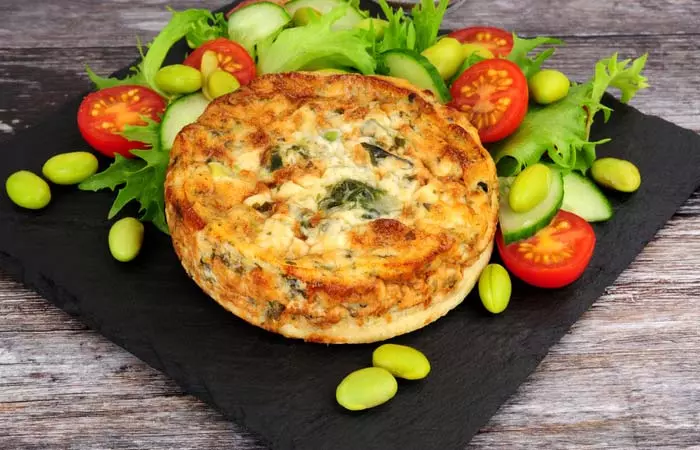
This recipe is fulfilling, easy to make, and high in protein. It’s that one meal to satisfy your hunger cravings any time of the day.
Ingredients
- 8 eggs, beaten well
- 1 package of frozen chopped spinach, thawed and drained
- 1½ cups of shredded raw cheese
- 1 onion, chopped
- 1 tablespoon of coconut oil
- ¼ teaspoon of sea salt
- ⅛ teaspoon of black pepper
Instructions
- Preheat the oven to 350℉ and keep a 9-inch pie pan ready with a rub of coconut oil.
- Heat coconut oil and onions over medium heat in a saucepan and gently fry until soft.
- Add in the spinach and cook until the excess moisture evaporates.
- Take eggs, cheese, salt, and pepper in a bowl and mix well.
- Blend in the spinach-onion mixture.
- Scoop the mixture into the pan and bake for 30 minutes.
The paleo diet vs. keto diet debate has been going on for a long time. However, both diets have many similarities but differ in a few ways. For example, they both limit carbohydrate intake and eliminate processed and junk foods to induce effective weight loss. The paleo diet is all about going back to our roots (like eating natural and organic foods) and allows consuming natural sugar while prohibiting dairy products. On the other hand, the keto diet allows consuming full-fat meat while excluding any form of sugar. The keto diet is rigid, while the paleo diet is inclusive and allows for a variety of foods. This makes the latter more sustainable. However, the keto diet is highly effective if you are aiming for quick, short-term weight loss.
Frequently Asked Questions
Does the paleo diet put you in ketosis?
The Paleo diet doesn’t put you in a state of ketosis since it focuses on wholesome food sources and doesn’t have restrictions for any particular food group.
Is keto or paleo better for inflammation?
The Paleo diet is better for reducing inflammation by restricting junk and processed food items and limiting sugar, alcohol, and gluten.
How do I switch from keto to paleo?
Transitioning out of a Ketogenic diet should be done by slowly reducing the fat intake and including carbs in your diet gradually. You should try and aim towards a balanced meal including vegetables, lean proteins, and wholesome carbohydrates to switch to a Paleo lifestyle.
Learn the differences between the Paleo diet and the Keto diet with this insightful video. Explore their unique benefits, key principles, and potential impacts on health to help you make the best nutritional decisions.
Personal Experience: Source
StyleCraze's articles are interwoven with authentic personal narratives that provide depth and resonance to our content. Below are the sources of the personal accounts referenced in this article.
(i) My Experience on Keto – or Could it be Atkins?https://thefoodconnectionblog.wordpress.com/2019/04/15/my-experience-on-keto-or-could-it-be-atkins/
References
Articles on StyleCraze are backed by verified information from peer-reviewed and academic research papers, reputed organizations, research institutions, and medical associations to ensure accuracy and relevance. Read our editorial policy to learn more.
- Low Carbohydrate Diet
https://www.ncbi.nlm.nih.gov/books/NBK537084/ - The Ketogenic Diet: Pros And Cons
https://pubmed.ncbi.nlm.nih.gov/31805451/ - Paleolithic Diet
https://www.ncbi.nlm.nih.gov/books/NBK482457/ - 2015-2020 Dietary Guidelines For Americans
https://www.dietaryguidelines.gov/sites/default/files/2019-05/2015-2020_Dietary_Guidelines.pdf - Ketogenic Diet
https://www.ncbi.nlm.nih.gov/books/NBK499830/ - Ketogenic Diet And Epilepsy: What We Know So Far
https://www.ncbi.nlm.nih.gov/pmc/articles/PMC6361831/ - Ketogenic Diet And Its Evidence-Based Therapeutic Implementation In Endocrine Diseases
https://pubmed.ncbi.nlm.nih.gov/31185843/ - Consumer Reports of “Keto Flu” Associated With the Ketogenic Diet
https://pubmed.ncbi.nlm.nih.gov/32232045/ - A Healthy Approach To Dietary Fats: Understanding The Science And Taking Action To Reduce Consumer Confusion
https://www.ncbi.nlm.nih.gov/labs/pmc/articles/PMC5577766/ - A Paleolithic-type Diet Results In Iodine Deficiency: A 2-year Randomized Trial In Postmenopausal Obese Women
https://pubmed.ncbi.nlm.nih.gov/28901333/ - Cutting Through The Paleo Hype: The Evidence For The Palaeolithic Diet
https://pubmed.ncbi.nlm.nih.gov/27051985/ - Popular Weight Loss Strategies: A Review Of Four Weight Loss Techniques
https://pubmed.ncbi.nlm.nih.gov/29124370/ - Effects Of A Short-Term Intervention With A Paleolithic Diet In Healthy Volunteers
https://pubmed.ncbi.nlm.nih.gov/17522610/ - The American Heart Association Diet And Lifestyle Recommendations
https://www.heart.org/en/healthy-living/healthy-eating/eat-smart/nutrition-basics/aha-diet-and-lifestyle-recommendations
Read full bio of Tracy Tredoux
Read full bio of Varsha Patnaik
Read full bio of Ravi Teja Tadimalla
Read full bio of Sindhu Koganti






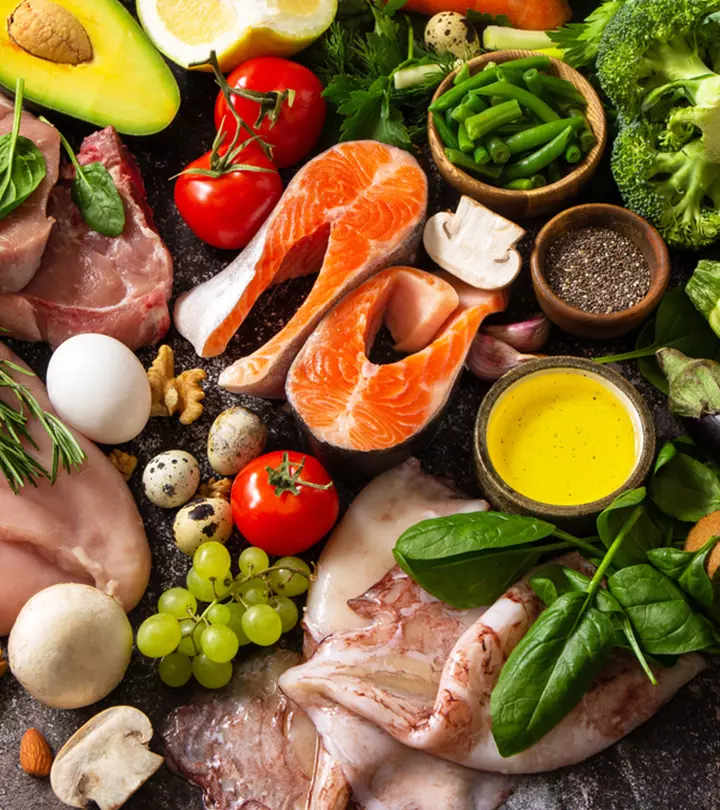
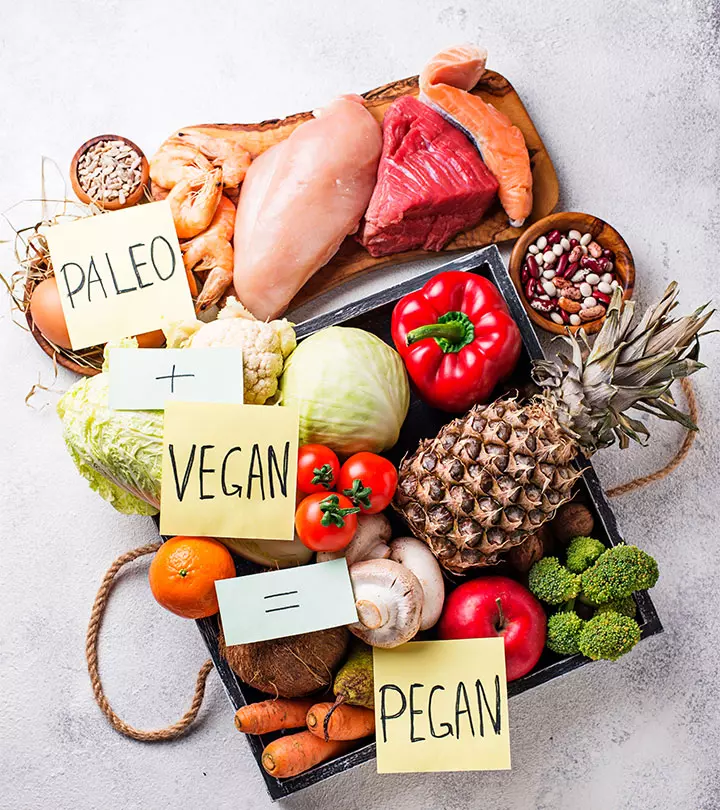


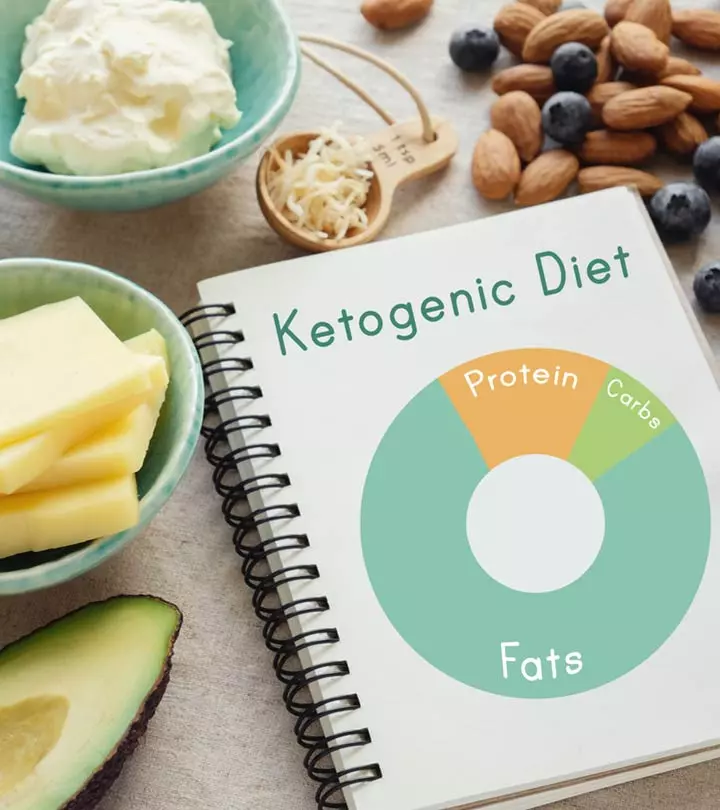
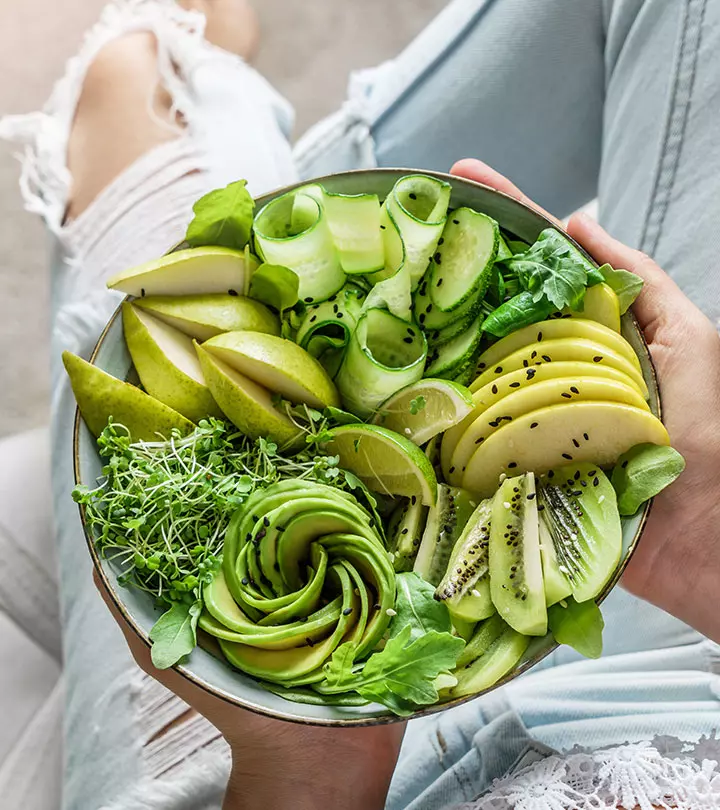
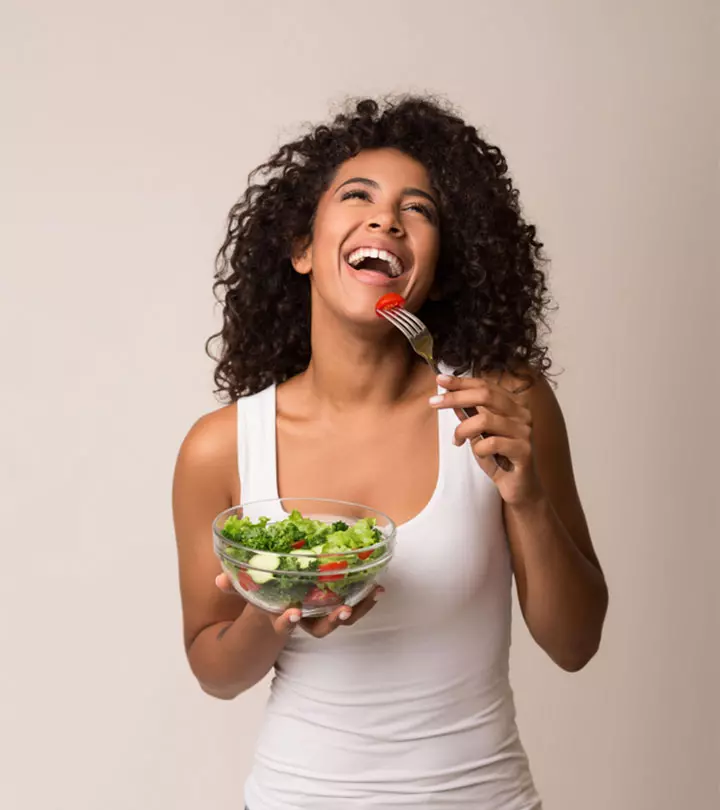


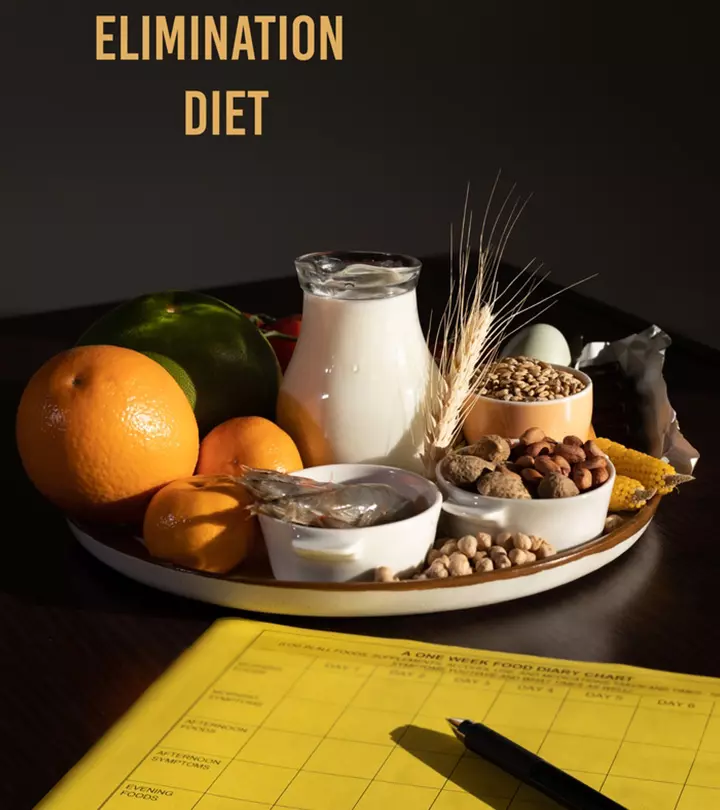


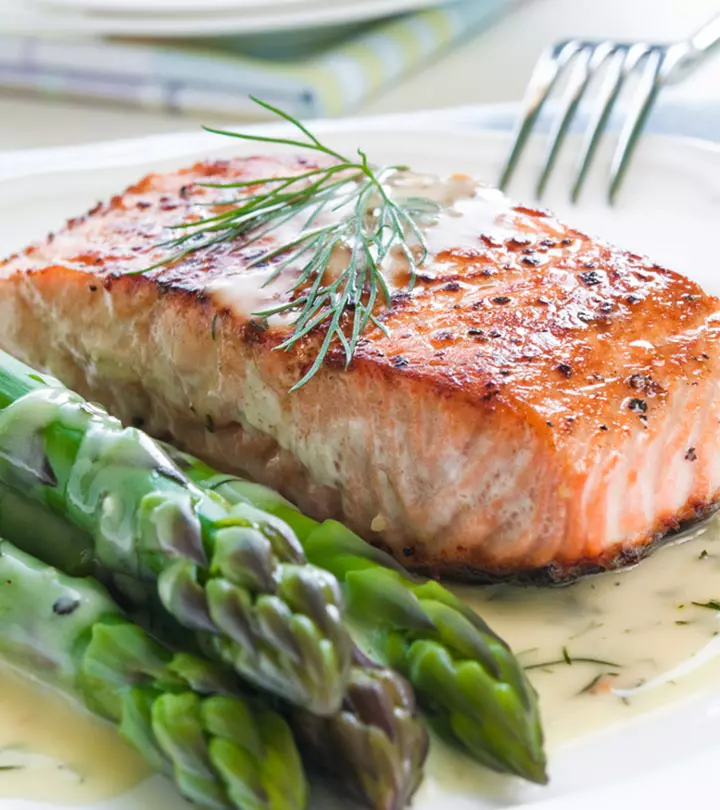

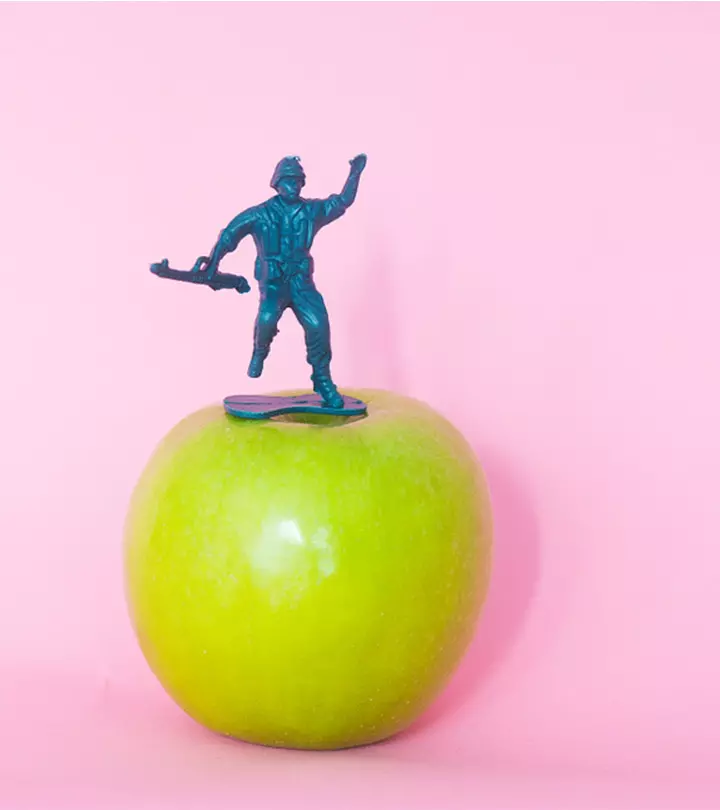


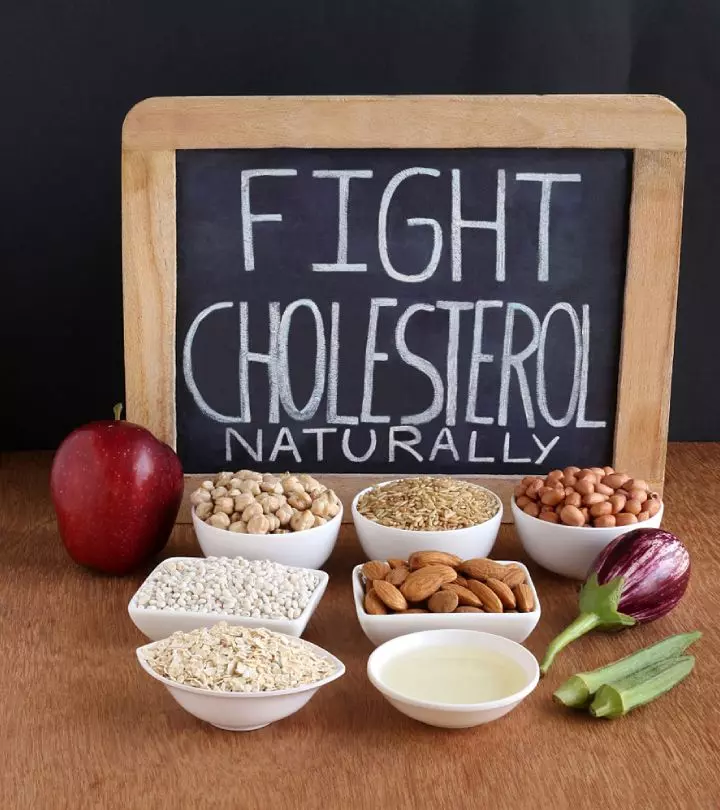


Community Experiences
Join the conversation and become a part of our empowering community! Share your stories, experiences, and insights to connect with other beauty, lifestyle, and health enthusiasts.